I am back in Melbourne for a short break before we fully enter the Christmas/holiday season. One of the main reasons for flying down was to see TIME by Rone, an exhibition currently on display in Flinders Street Station. It is truly one of the most stunning exhibitions I have ever seen. It combines my love of abandoned places and large-scale installations. All with a sprinkle of nostalgia and feeling as though you have stumbled into a time capsule. According to the main exhibition panel ‘TIME is a nostalgic love letter to mid-century Melbourne and a tribute to one of the city’s great icons.’ This blog post will start with some context. Then, I will take you room-by-room through the exhibition.
Exhibition Context
There is an introductory panel in the space which sets the scene. It is difficult to find, but worth reading. To summarise, the panel reveals the following. TIME takes visitors back to the mid-twentieth century, serving as a ‘vignette of working-class life and an ode to the faded yet enduring beauty of this forgotten place.’ Rather than being a history lesson, Rone has interpreted the space, telling the many stories of the area. It is intended to be an open-ended narrative, experienced differently by each visitor.
In total, there are 11 rooms, each with a unique artwork and a range of objects to suit a theme. There are so many objects in each room. You really could spend hours looking through all the different elements and discovering something new each time. We walked through each room twice and kept finding little objects that had been previously overlooked.
I am now going to share with you my experience of the exhibition. I highly recommend visiting if you have the opportunity.
Setting
The exhibition is held on Level 3 of Flinders Street station. An area that was once reserved for offices as well as leisure activities like dancing in the massive ballroom. I love exploring spaces that have been abandoned or are usually off-limits. So even before entering the exhibition I was excited to see how the space had been transformed and explore somewhere new.

The Classroom
The first room we entered was the classroom. At the front of the room is a teacher’s desk and blackboard displaying the portrait of a woman. In each room there is a different portrait – part of the artist’s style. I was way more focused on the objects in the room than the portraits so I won’t write about them. My favourite objects in this room are all the books and pamphlets on the chairs and desks. It was fun reading them while wandering around.

The Art Studio
This is one of the smallest rooms in the exhibition and is connected to the classroom. There are a number of easels set-up, each with a different sketch on the paper. I probably spent the least amount of time in this room.

The Library
The library was one of my favourite rooms. It is a large room filled with floor to ceiling book shelves wrapping around the perimeter. In the middle are cobweb-ridden display cases, over-turned chairs, and papers all over the ground. There is even a hidden doorway at the back and spiral staircases connecting the bottom to the top level of books.
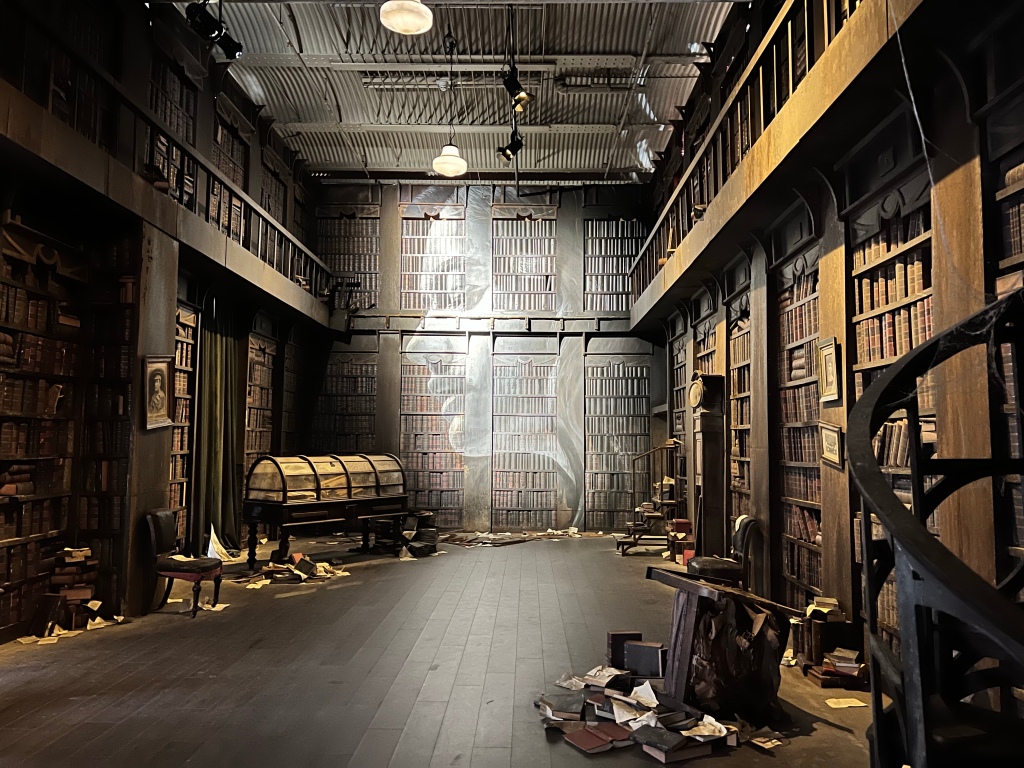

The Pharmacy
For obvious reasons, this was also one of my favourite rooms. I loved all the bottles and tins behind the counter and old magazines and cards at the front. Hidden behind the door and counter is a microscope with some vials beside it. It really feels as though you have stepped back in time into an old pharmacy.


The Clock Room
Behind one of the external clocks at the station is the clock room. There are a lot of bottles of soda and wine in this room and a few pieces of furniture off to the side.

The Ballroom
Inside the large old ballroom is a huge conservatory filled with green plants and some garden furniture. It fills the space well and adds grandeur to the exhibition.

Sewing Room
There are two rooms in the exhibition that have multiples of the same object positioned to look as though work is continuing. This is one of the rooms. Inside are rows of sewing machines with a large fabric cutting table at the back. Along the walls are dressmaker models, patterns and extra thread.


Post Office
The little post office has original mail bags and mail sorting cabinets on the wall. There are also these little vintage maps of Melbourne suburbs, designed to help with the delivery of mail.


Office
The office space is definitely a highlight. Rows of typewriters are positioned between old office furniture. I loved the attention to detail in this space. The cardigan draped over one of the chairs. The little porcelain dogs in someone’s in-tray. It was my favourite room overall. It also contained my favourite object – this out and in board to keep track of employees.



Head Office & Living Room
I have combined the final two rooms we walked through. Similar to the art studio, I didn’t spend a lot of time in these rooms. I did like the unmarked folders stacked on top of each other and the open purse hanging from the coat hook.


Logistical Information
I hope this post and the accompanying images motivate you to visit (if you can). The exhibition is running until April 2023 and tickets cost around $40 with discounts for concession card holders. It is fully accessible.

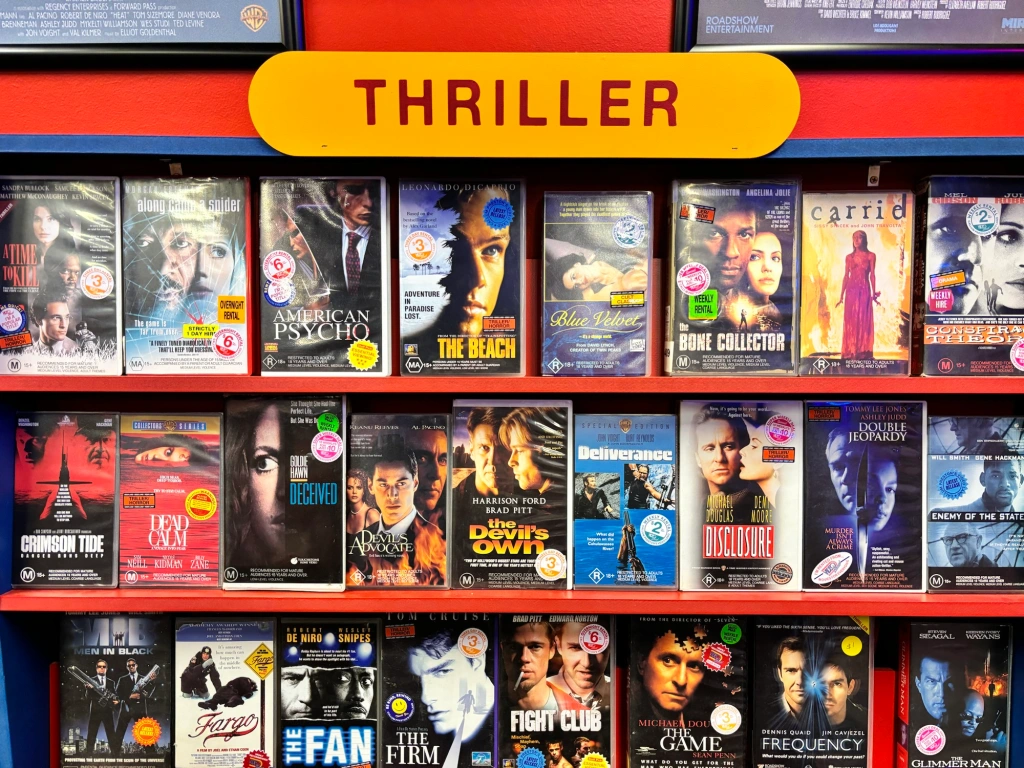
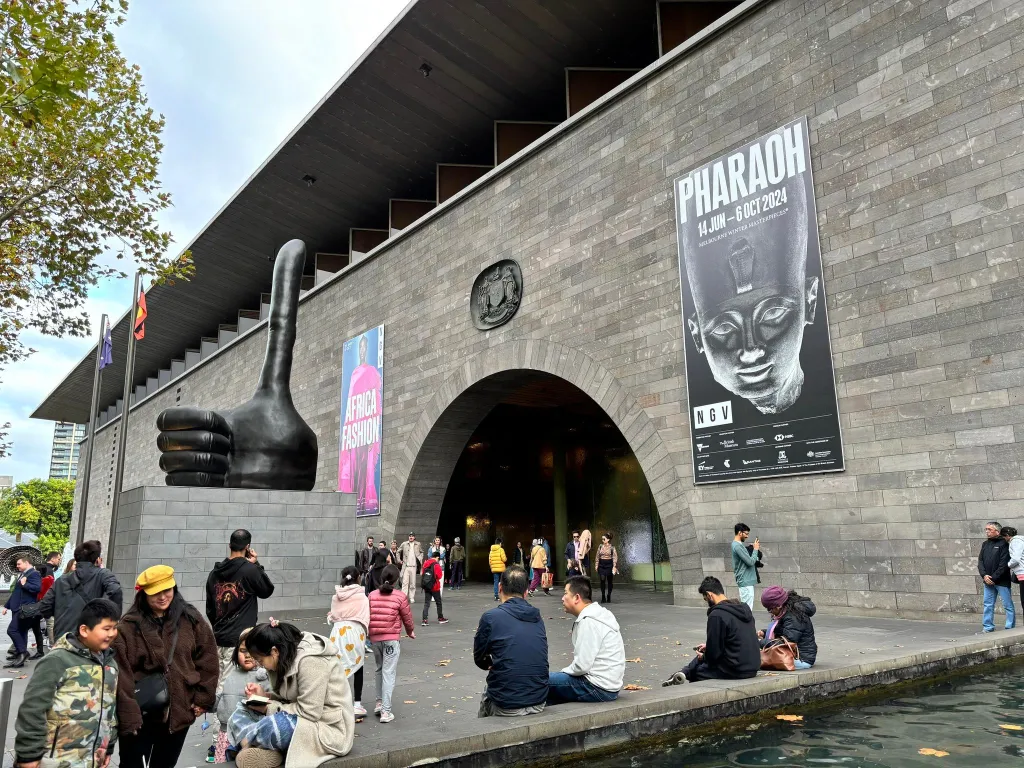
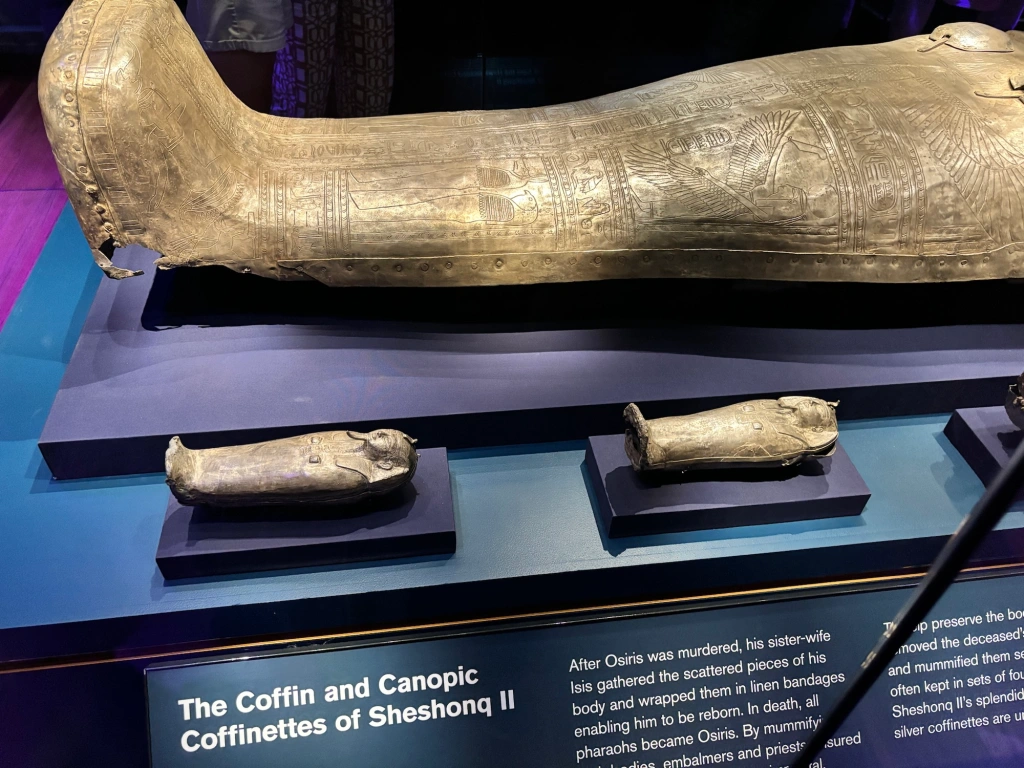


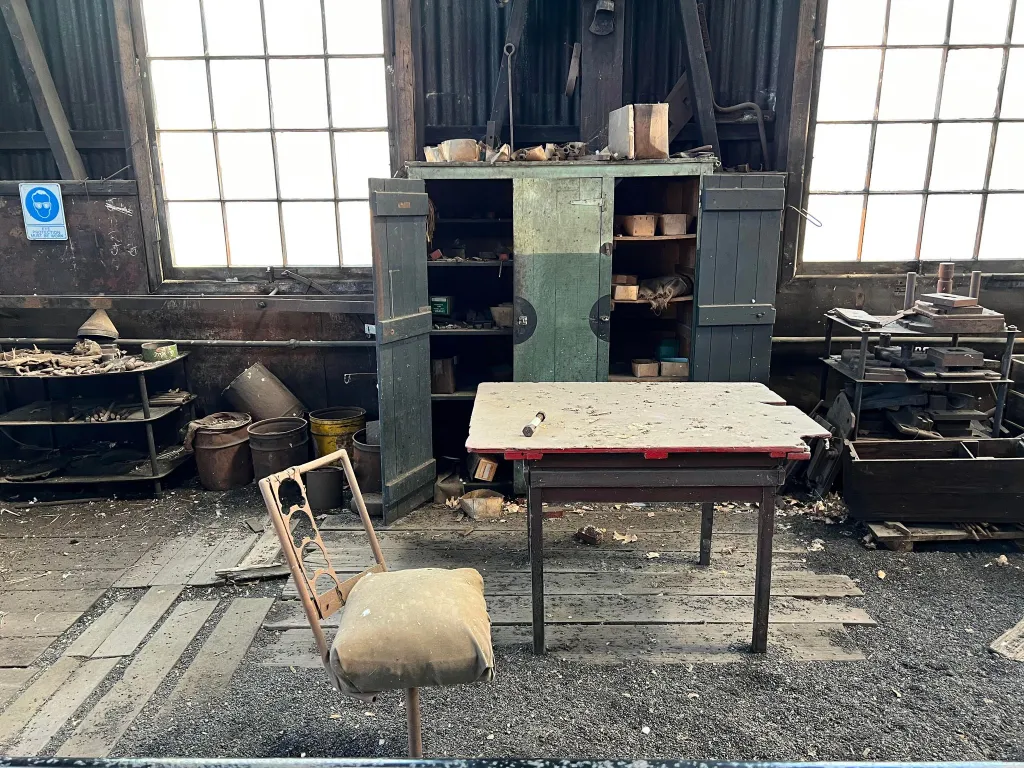
Leave a comment